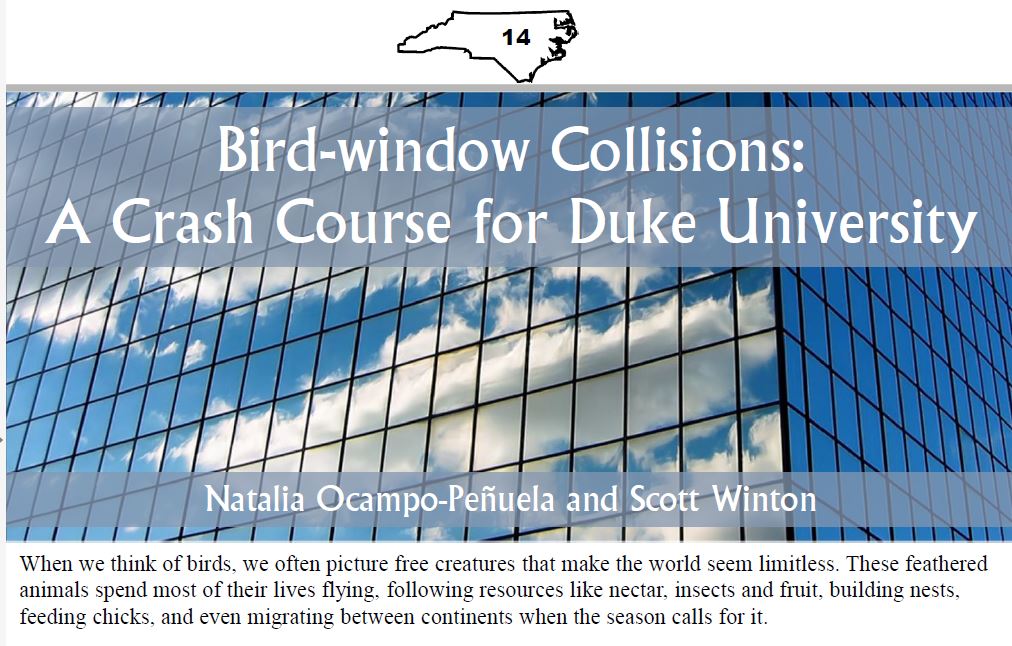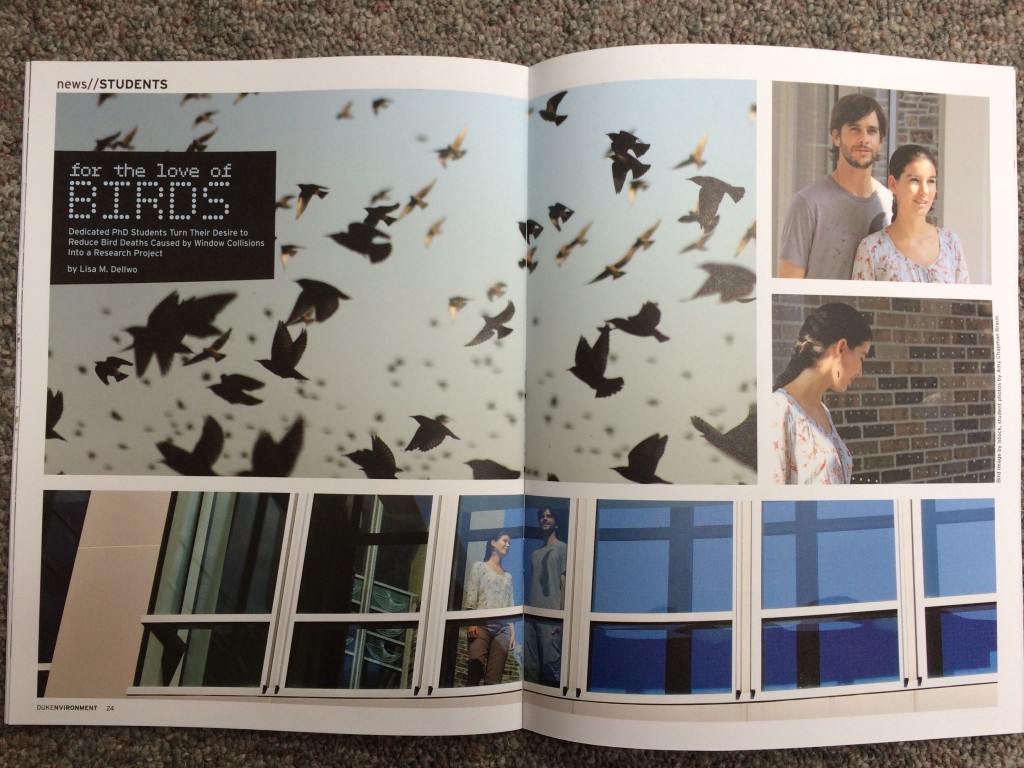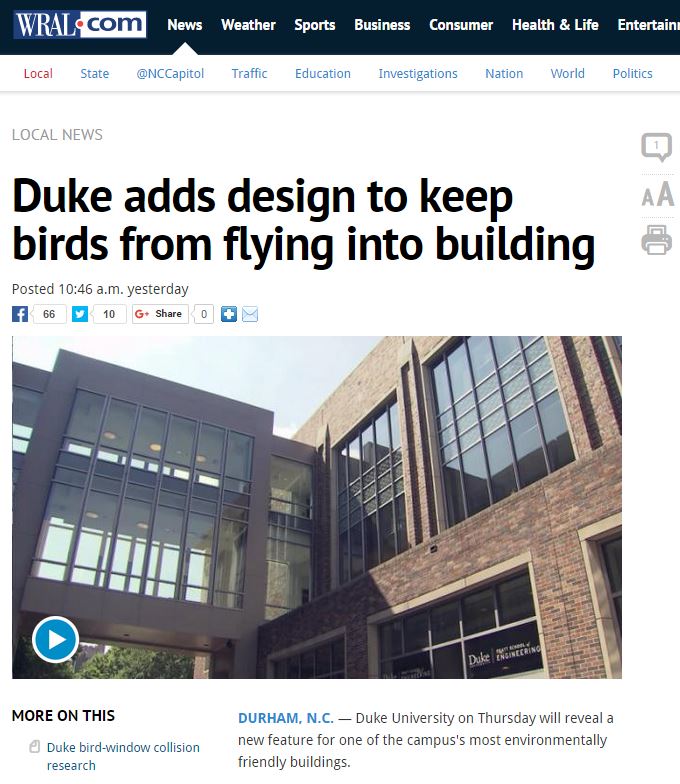Following the publication of our bird-window collision paper on PeerJ early this month, our team leader was interviewed by Window Film Magazine to talk about the results of our study and the importance of mitigation. You can read the complete story here!
Author: Natalia Ocampo Penuela
Team leader and first author on our PeerJ bird-window collision paper Natalia Ocampo-Peñuela was interviewed for PeerJ’s blog about our recent paper. Read the complete story here!
Team leaders Natalia Ocampo-Peñuela and Scott Winton recently authored an article for the NC Wildlifer, the magazine for the NC chapter of The Wildlife Society. The article describes results and mitigation strategies used by our team at Duke University to reduce collisions. Read the complete article here!
A new scientific paper written by our bird-window collisions team at Duke came out on PeerJ on February first. This article described results from carcass surveys in Spring and Fall 2014, and Spring 2015, and describes the process towards mitigation on the deadliest building. It’s open access, so please share!
Read the article here!
DukEnvironment is a bi-annual magazine that publishes articles about research conducted by Nicholas School of the Environment faculty and students, at Duke University. In this Fall’s issue, our leaders Natalia Ocampo-Peñuela and Scott Winton are featured in the “Student News” section. You can read more about our bird-window collision project and the people involved in this article.
Read the full story here! (scroll down to page 25)
Duke University news just released a video about our project and the dotted pattern installed in CIEMAS to prevent bird-window collisions. We are very proud! Check it out!
You are now all aware of the fact that the deadliest building on Duke’s campus is deadly no more! CIEMAS has gone bird friendly and the local news are all over it celebrating this wonderful action. The full story will come out on September 17th when Duke’s administration presents the bird friendly pattern on CIEMAS, for now here’s this news piece.
Read more and watch the video here!
We all know that architects don’t put lots of glass in buildings intending to kill birds. No, they put there so people inside the building enjoy natural light and beautiful views. So the architects are not to blame, they all mean well and want us happy. However, large amounts of glass take millions of collisions each year, at Duke, one building especially: CIEMAS. The News & Observer, after doing a story about our bird-window collision project, proceeded to write a nice opinion piece on the subject.
Read the article here!
Sometimes architects and project managers argue that renovations to make a building bird friendly are expensive, and don’t give an added benefit to the structures. Well…think again! After a half-billion 5-year renovation, the Javits Center has bird friendly glass that has also reduced energy consumption by 26%. A dotted patter, just like the one installed at Duke’s CIEMAS, has reduced bird collisions by 90%.
This is a great example of a large scale renovation that yields benefits for all. Plus this building now has a green roof with nesting gulls, geese, and (soon) kestrels!
Read the complete New York Times article here!
Read the article here!
We got a lot of media attention for having the “deadliest” building of all, as you may recall. We identified the engineering building, CIEMAS, as the building with the most bird-window collisions with 72% of the strikes. The obvious solution to prevent collisions on campus, then, was to retrofit this structure and stop about 2/3 of the collisions.
After conversations with the administration in several occasions, and a through media coverage, Duke has decided to make CIEMAS bird friendly! This summer, dotted patterns were applied to the most dangerous structures for birds: glass walkways and large windows. We will continue to monitor collisions at the building to assess the efficacy of the patterns.
We invite other universities and organizations to do the same!








